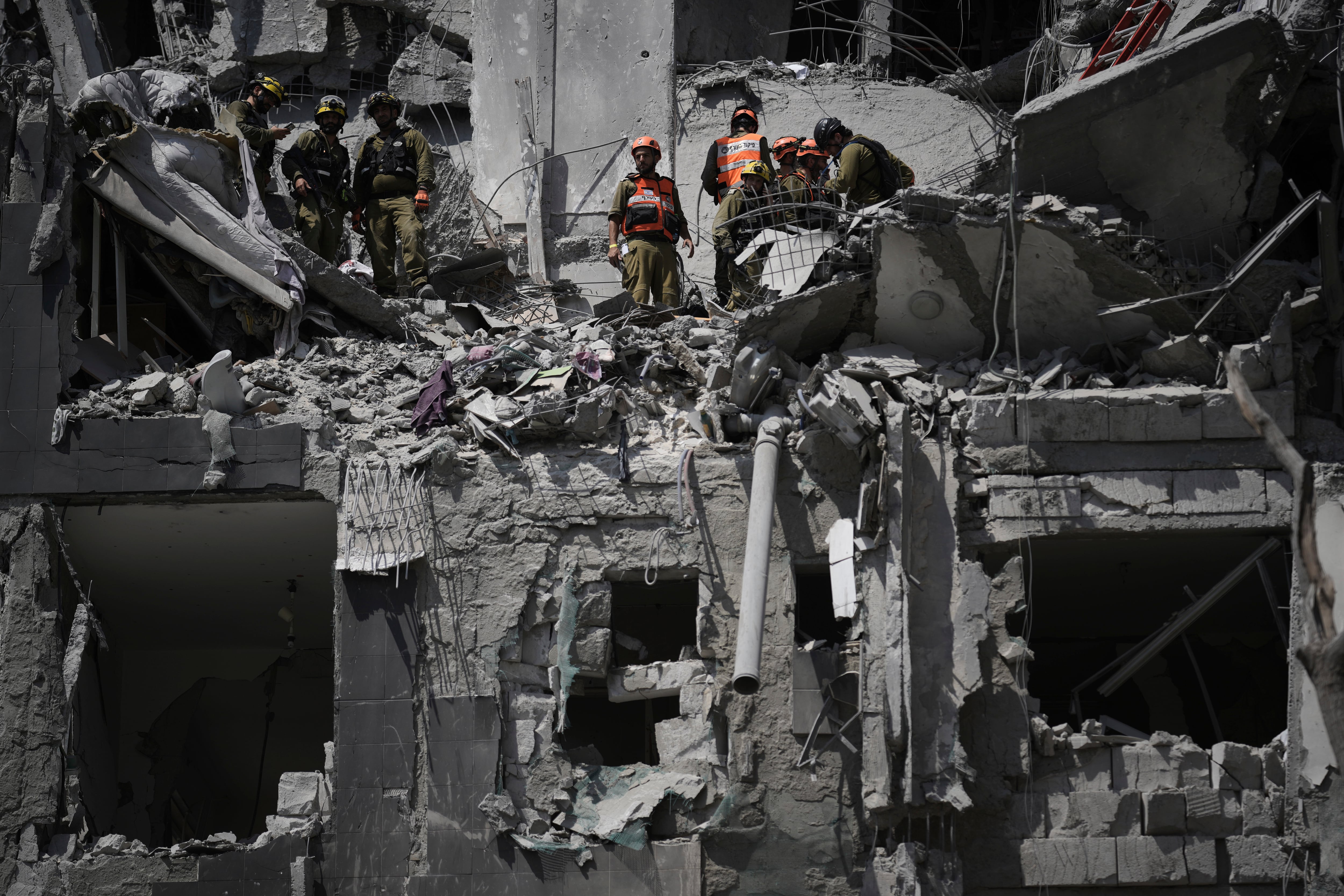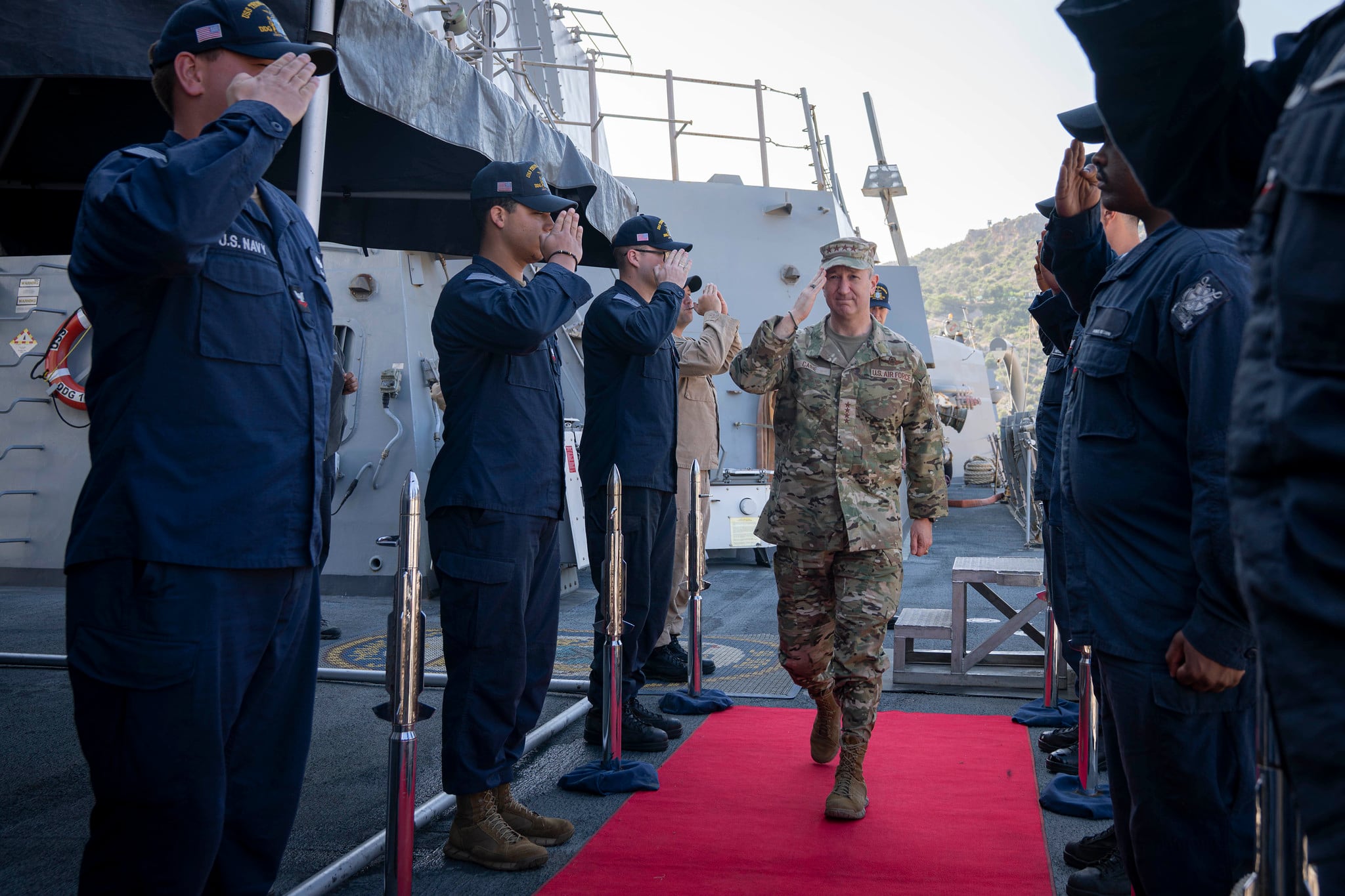U.S. Navy warships conducting operations in the Eastern Mediterranean Sea disrupted several Iranian air strikes, according to a release issued by the service Sunday.
The U.S. 6th Fleet positioned five Arleigh Burke-class guided-missile destroyers in the area to provide defensive support to Israel. Since June 14, the ships “intercepted multiple Iranian ballistic missiles,” the release said. Those destroyers were: the Thomas Hudner, Arleigh Burke, The Sullivans, Oscar Austin and Paul Ignatius.
The ships used the Aegis Weapon System, an automated naval weapons system that utilizes high-powered radar to detect and destroy aerial threats. The release did not provide details about the targets of the missiles that the Aegis destroyed.
Air Force Gen. Dan Caine, chairman of the Joint Chiefs of Staff, and Adm. Stuart B. Munsch, U.S. Naval Forces Europe-Africa commander, visited crew aboard the Thomas Hudner during a port call in Souda Bay, Greece, on Sunday and congratulated them on their successful mission in support of regional stability.
RELATED

“Thomas Hudner represents the best and the highest standard of our Navy,” Munsch said. “Deploying from our homeland and operating forward to defend our nation and our interests abroad has been a hallmark of our Navy for over two centuries. The naval forces operating in the European theater and beyond have shown that our Navy is prepared, postured, and ready for the challenges we face.”
The Arleigh Burke, Paul Ignatius and Oscar Austin are primarily stationed in Naval Station Rota, Spain. The Sullivans and Thomas Hudner are home-ported in Mayport, Florida.
Israel launched airstrikes against Iran’s nuclear facilities on June 13, killing nuclear scientists and senior military leaders.
Iran retaliated, firing missiles at Israel and striking a hospital. The country’s supreme leader, Ayatollah Ali Khamenei, cautioned the United States that intervention would lead to “irreparable damage” to the U.S.
On June 21, President Donald Trump ordered airstrikes against three Iran nuclear facilities. Operation Midnight Hammer included 125 U.S. aircraft, 75 precision weapons and more than a dozen 30,000-pound bunker-buster bombs that struck Iranian nuclear facilities Fordo, Natanz and Isfahan.
The full extent of the strike and its damage to the Iranian nuclear program have been hotly debated.
The Trump administration initially praised the attack for completely obliterating Iran’s nuclear sites and program.
But an initial assessment by the Defense Intelligence Agency said the bombing only set Iran’s nuclear program back by months, a contradiction of the administration’s claims.
Defense Secretary Pete Hegseth contested the report in a Thursday press conference, pushing back against the media’s chronicling of the dissonance. Hegseth cited the agency’s assessment as “preliminary” and “low-confidence,” and said the strike resulted in “severe damage” to Iran’s nuclear sites.
In the aftermath of Operation Midnight Hammer, Iran launched missile attacks June 23 against United States forces stationed at the Al Udeid Air Base in Qatar, but Qatari forces intercepted the attack.
Riley Ceder is a reporter at Military Times, where he covers breaking news, criminal justice, investigations, and cyber. He previously worked as an investigative practicum student at The Washington Post, where he contributed to the Abused by the Badge investigation.





